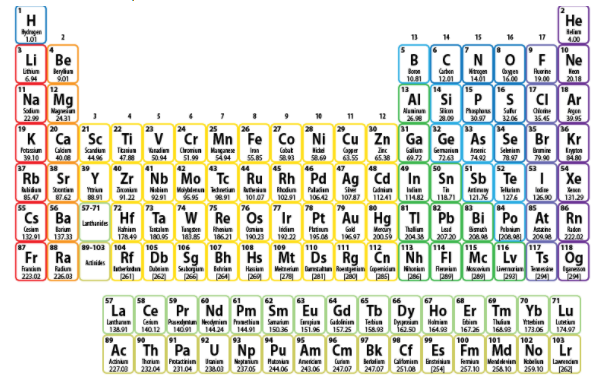
Similarity in the radius of Zr and Hf is explained on the basis of:
A.Lanthanide contraction
B.Inert pair effect
C.Same outer shell configuration
D.Anomalous configuration
Answer
558.9k+ views
Hint: The given elements belong to a group of elements known as Lanthanides. Lanthanides are groups of elements which are present in the f- block and are also known as inner transition elements. The atomic number of this group of inner transition elements ranges from 58 to 71. These Lanthanides exhibit a special phenomenon known as Lanthanide contraction.
Complete step by step answer:
Before we move forward with the solution of this question, we must first understand some important basic concepts. Lanthanide contraction basically corresponds to the situation where the atomic radii of the elements in the Lanthanide series decreases drastically from left to right. Now we need to understand that f – block elements are placed in a designated zone inside the d – block. So once the last element of the lanthanide series, we do not move to the next period, but continue to place the d – block elements in the same period.

A general trend that is observed is that the atomic radius of elements decreases as we move from left to right in a period. But due to Lanthanide contraction, this trend is not observed. After the last element of lanthanide series, the atomic radius again increases when we move forward in the same period in the d – block. Hence, the similarity in the radius of Zr and Hf is explained on the basis of lanthanide contraction.
Hence, Option A is the correct option
Note: Lanthanide contraction is caused because of the poor shielding effect of f – orbital. This results in a greater nuclear change acting on the outer electrons and increases the force of attraction. This causes the outer electrons to be pulled strongly towards the nucleus, thus causing the rapid decrease in the radii of Lanthanides.
Complete step by step answer:
Before we move forward with the solution of this question, we must first understand some important basic concepts. Lanthanide contraction basically corresponds to the situation where the atomic radii of the elements in the Lanthanide series decreases drastically from left to right. Now we need to understand that f – block elements are placed in a designated zone inside the d – block. So once the last element of the lanthanide series, we do not move to the next period, but continue to place the d – block elements in the same period.

A general trend that is observed is that the atomic radius of elements decreases as we move from left to right in a period. But due to Lanthanide contraction, this trend is not observed. After the last element of lanthanide series, the atomic radius again increases when we move forward in the same period in the d – block. Hence, the similarity in the radius of Zr and Hf is explained on the basis of lanthanide contraction.
Hence, Option A is the correct option
Note: Lanthanide contraction is caused because of the poor shielding effect of f – orbital. This results in a greater nuclear change acting on the outer electrons and increases the force of attraction. This causes the outer electrons to be pulled strongly towards the nucleus, thus causing the rapid decrease in the radii of Lanthanides.
Recently Updated Pages
Master Class 12 English: Engaging Questions & Answers for Success

Master Class 12 Business Studies: Engaging Questions & Answers for Success

Master Class 12 Economics: Engaging Questions & Answers for Success

Master Class 12 Social Science: Engaging Questions & Answers for Success

Master Class 12 Maths: Engaging Questions & Answers for Success

Master Class 12 Chemistry: Engaging Questions & Answers for Success

Trending doubts
What are the major means of transport Explain each class 12 social science CBSE

Which are the Top 10 Largest Countries of the World?

Draw a labelled sketch of the human eye class 12 physics CBSE

Explain sex determination in humans with line diag class 12 biology CBSE

The pH of the pancreatic juice is A 64 B 86 C 120 D class 12 biology CBSE

Explain sex determination in humans with the help of class 12 biology CBSE




